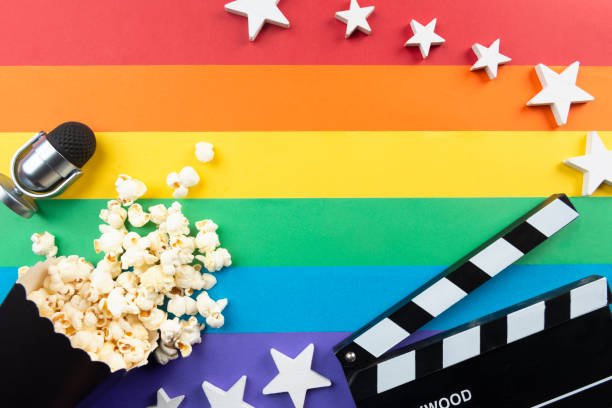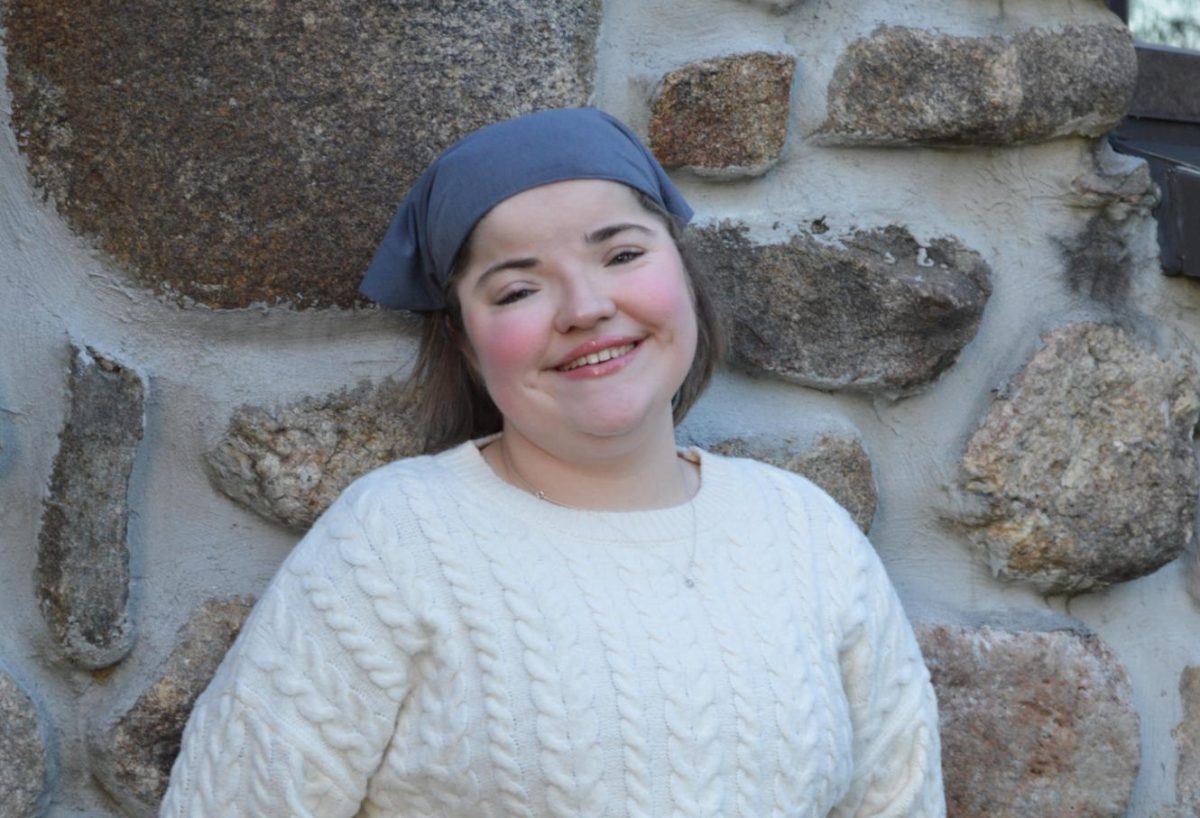Editor’s note: This is a research paper written by Trombly for her AP Seminar class, hence its length.
The fight for LGBTQ+ rights has been ongoing. In recent years, queer culture has become more mainstream, leading to a greater exposure of people to queer stories. This representation is vital for advancing rights for the LGBTQ+ community, contributing to the normalization of queer art and existence in our society. The underlying factor that I have identified when watching films centered around queer characters is that they often involve some element of tragedy or loss, with none of the characters achieving a “happy” ending. There are even terms coined for this phenomenon, such as the “bury your gays” and “dead lesbian syndrome” to describe the common tragic trope of queer characters facing tragic ends (TV Tropes, 2015). Blatant homophobia has always posed a challenge for the queer community, but reusing the same heartbreaking tropes has contributed to a nuanced level of internalized homophobia. As queer stories continue to be represented on the big screen, it’s vital to understand how promoting queer tragedy hurts the queer community and contributes to homophobia. Although queer representation attempts to progress past the restrictive Hays Code, the contemporary visibility of LGBTQ+ stories remains complicated, flawed by the past, often reduced by social media memeification, and simultaneously overlooking the experiences of people of color. Modern queer films must be more reflective of the diversity within the community, reflecting the true beauty of queer love without promoting internalized homophobia through stereotypical storytelling.
LGBTQ+ characters have existed on screen since the rise of film in the early 1900s. In 1934, Hollywood introduced its own censorship guidelines, the Hays Code, designed to regulate the morality of movies and avoid anything deemed scandalous at the time, like drugs, sex, violence, religion, or race (Rosenfeld, 2024). Queer people continued to be in films despite this censorship, but what they were allowed to be was limited, ultimately to reinforce homophobia. As one queer journalist puts it, you could either be “queercoded, a villain, or a corpse” (Bost, 2022). The Hays Code did irreparable harm to queer representation in film, ultimately demonstrating that it’s okay to be queer, as long as you’re adequately punished for it. Disney is especially known for villainizing queer characters. In The Little Mermaid, Ursula was designed after a real drag queen named Divine, as represented by her voice and makeup. Villanizing queer characters in the media leads to the villainization of queer people in real life. The 1950s and 60s saw the rise of explicitly gay characters in film, though they almost always ended the movie 6 feet under. The Hays Code ended in 1968, as American culture had shifted dramatically, and regulations became more difficult to manage.
While the official code may have ended, the practices continue to live on today, promoting homophobia within our society and culture. Luca Guadagnino’s Call Me by Your Name, released in 2018, tells the story of a gay summer romance between a teen boy and his father’s intern. The film concludes with the young boy sitting alone after his brief summer love announced his engagement to a woman. On the discussion of the Guadagnino ending, film critic Thomas Piontek claims, “Making homosexuality itself the tragic flaw suggests that to be gay = to be tragic” (Quick, 2020). Similarly, the 2005 Ang Lee film, Brokeback Mountain, follows a secret, ill-fated love affair between two Wyoming cowboys. The film follows the “bury your gays” trope, with one of the cowboys dying at the end. Piontek argues that the goal of Brokeback Mountain is not to change the audience’s ideas about heterosexual privilege, government policies on AIDS, or homophobia, but rather “to generate pity and compassion for one particular individual” (Quick, 2020). These two films, which are both wildly popular in queer and popular culture in the 2000s, fail in the sense that they frame the gay experience as being tragic and worthy of pity, failing to address the systemic homophobia at play that affects queer communities. These films reflect the effect of the almost century-old Hays Code, which pervasive standards continue to affect queer representation in media today. Films featuring queer romances and stories should work to elevate LGBTQ+ stories, instead of reverting to the overdone stories surrounding queer tragedy.
The rise of social media has led to the creation of safe spaces for LGBTQ+ individuals, allowing them to find a community, support, and refuge. The use of memes on the internet allows social media users to deliver a cultural or social expression, primarily humor. While some memes may be seemingly harmless, queer individuals are often targets of online hate. The memeification of queer media on social media gives insight into rising internalized homophobia. For instance, with Brokeback Mountain being rereleased in theaters this year for its 20th anniversary, one TikTok user posted about how the entire theater laughed when getting to the infamous “I wish I knew how to quit you” line (Skum, M). That scene, which is a very serious admission of queer guilt, is now used as a meme. There are many other instances of this on TikTok, where users will post clips from a queer movie and add a humorous caption or unrelated audio, stripping the content of its original purpose and value. While memes and humor are common forms of how users interact with social media platforms, using queer stories as the “joke” or source of humor is promoting homophobia by trivializing LGBTQ+ experiences.
While representation of queer people of color (PoC) has made some strides over the past couple of years in films like Barry Jenkins’ 2016 Moonlight, queer media tends to overlook the experiences of PoC, contributing to a homogenous understanding of the queer identity. Call Me by Your Name, for instance, has no PoC, leading people to describe it as being a “white gay fantasy” (Quick, 2020). Excluding PoC from representations of LGBTQ+ stories in media doesn’t reflect the diversity of the community, simultaneously ignoring the extremely significant contributions of PoC to vital LGBTQ+ movements. During the AIDS crisis, queer media was an essential tool in humanizing queer people. However, the media lacked diversity, “focusing primarily on white, affluent, cisgender, gay men living in urban areas” (Myers, 2025). Understanding errors in our past gives us the tools to make queer media more inclusive for everyone within the community. Queer media is never perfect, but as it becomes more mainstream, it is important to represent people of color, for the progress of the community, and to reduce homophobia in society as a whole.
While grief and struggle are historically intertwined in the queer community, now more than ever, we need positive, diverse representation in our media to prove that we won’t go back to homophobic violence and standards. When understanding why mental health within the LGBTQ+ community is drastically low, it is essential to consider how media portrayal affects the community. Queer characters shouldn’t have to die on screen for society to finally sympathize with their struggles. Modern queer visibility remains tainted by the Hays Code’s tragic tropes, undermined by the memeification from social media, and failing to center LGBTQ+ people of color into the narrative. Future queer media must confront the past by celebrating authentic intersectional experiences that promote true acceptance of queerness in our society.
Myers explores the progress queer representation has made, while also recognizing its flaws in promoting harmful stereotypes and resorting to common tragic tropes. Myers discusses early representations of queer media on screen and the impact of the Hays Code on our modern media. She also acknowledges the tragedy tropes that are extremely common in queer media, citing Call Me by Your Name and Brokeback Mountain as being relevant examples of tragic queer films that perpetuate falsehoods that are harmful for both queer and non-queer audiences alike. Myers highlights the need for diverse representation in queer media, specifically the inclusion of people of color. Excluding people of color from media surrounding the queer experience is not a proper reflection of the queer community. Myers then conducted a study using the 2019 film Booksmart, along with a survey to understand the impact of queer representation in media on college-aged viewers. Myers submitted this paper as her Master’s Thesis at the University of Northern Colorado as a student studying sociology. Using this in my analysis will allow me to understand the importance of representation of people of color in queer films, reinforcing ideas on how to improve the overuse of tragic tropes.
In his argument, Quick analyzes the tensions within the queer community about accurate representation and portrayal of queer relationships and identity. Quick acknowledges Call Me by Your Name, a 2019 Luca Guadagnino queer film, as a specific epicenter for the debate surrounding what constitutes a good representation of queer people. Due to ‘queer’ being a fairly ambiguous word, many individuals who identify as ‘queer’ can exist in a grey area, not necessarily needing to abide by anything binary or other standards. Call Me by Your Name was heavily awarded and praised for its portrayal of a queer romance. However, Quick recognizes the criticism the film got as well, as some described it as a “white gay fantasy” due to the lack of representation of people of color. Analyzing the use of social media platforms to carve out spaces for queer individuals, Quick recognizes how conversations about queer media online can contribute to a sense of community and belonging. Film critic D. A. Miller raises an interesting point that popular queer movies equate homosexuality to tragedy, which can be said about both Call Me by Your Name and Brokeback Mountain. While both films were important in advancing the representation of queer stories in the mainstream, Quick argues that both films might have been used to promote internalized homophobia due to their tragic endings. Quick holds an M.A. in the Humanities from the University of Chicago and has been published in many journals, specifically about LGBTQ representation. Using this in my essay will allow me to understand the cultural impact of queer films and how representation can be improved to not reinforce a tragic trope.
Works Cited
Bost, A. (2022, July 21). A History of Queerness on Screen. The Science Survey. https://thesciencesurvey.com/spotlight/2022/07/21/the-history-of-queerness-on-screen/
Clements, R., & Musker, J. (Directors). (1989, November 17). The Little Mermaid. Walt Disney Pictures.
Guadagnino, L. (Director). (2018, January 19). Call Me by Your Name. Warner Bros. Pictures.
Jenkins, B. (Director). (2016, September 2). Moonlight. A24.
Lee, A. (Director). (2005, December 9). Brokeback Mountain. Paramount Pictures.
Myers, L. J. (2025). Changing the Channel: How Queer Representation in Mainstream Media Influences Social Perceptions in Young Adult Viewers. UNCOpen. https://digscholarship.unco.edu/theses/350/
Quick, T. (2020). The Queer Public and its Problem with Representation. The Velvet Light Trap, 86(1), 27–36. https://muse.jhu.edu/article/765112
Rosenfeld, J. (2024). Hays Code | Hollywood History, Films, Years, Rules, Era, & Definition | Britannica. Encyclopedia Britannica. https://www.britannica.com/art/Hays-Code
Skum, M. [@skumrag]. (2025, June 22). Like its wild bc none of the movie is funny besides a few lines #brokebackmountain [Video]. TikTok. https://www.tiktok.com/t/ZP8AjssKw/
TV Tropes. (2015). Bury Your Gays – TV Tropes. TV Tropes. https://tvtropes.org/pmwiki/pmwiki.php/Main/BuryYourGays
Annotated Bibliography
Myers, L. J. (2025). Changing the Channel: How Queer Representation in Mainstream Media Influences Social Perceptions in Young Adult Viewers. UNCOpen. https://digscholarship.unco.edu/theses/350/






